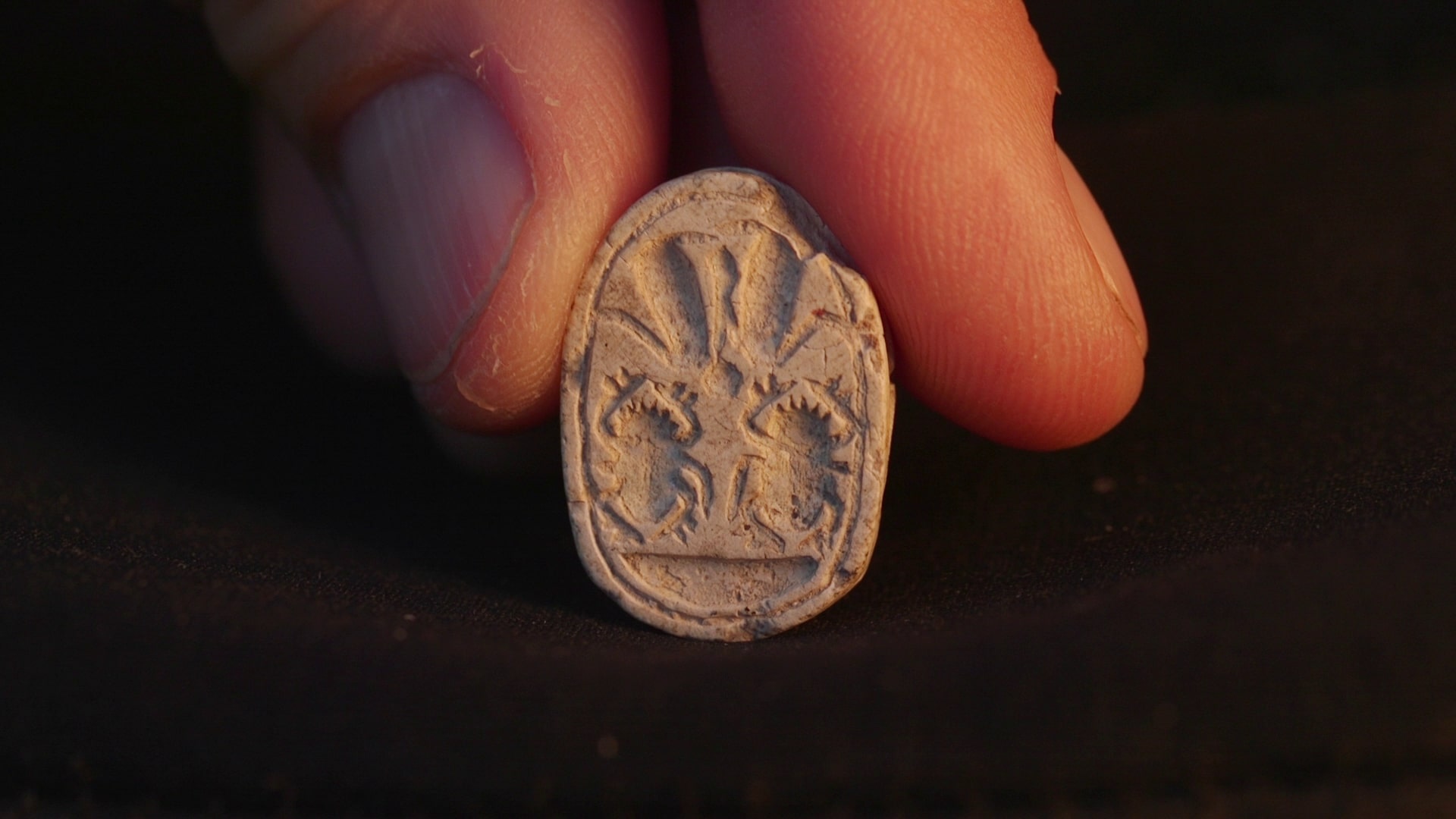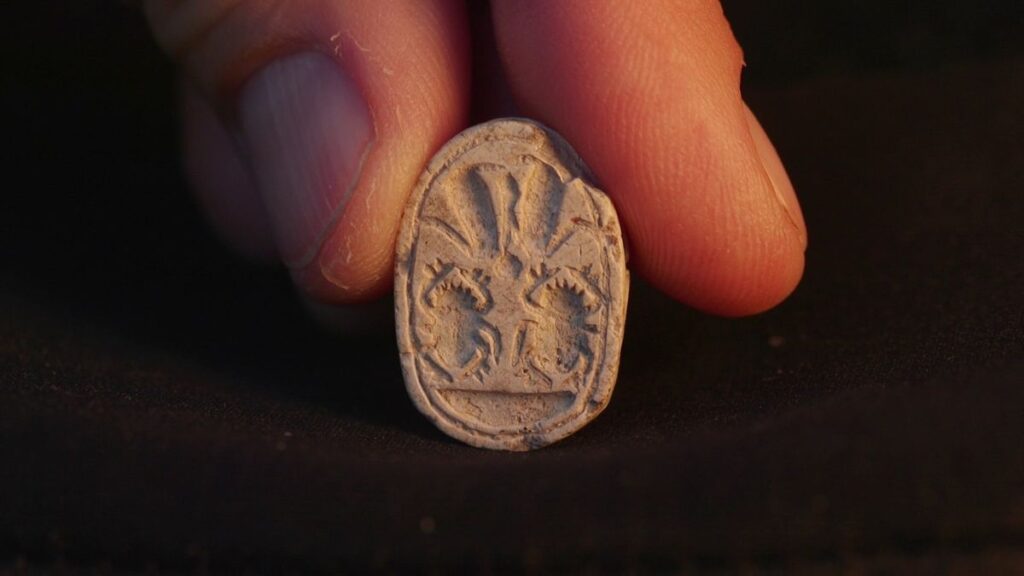
A 3-year-old girl who was walking with her family along a trail in Israel unexpectedly found a piece of history: a 3,800-year-old scarab amulet.
Ziv Nitzan discovered the scarab in March when her family was visiting Tel Azekah, a historical site that was inhabited as early as the Bronze Age. While strolling along a dirt path scattered with gravel, Ziv noticed an interesting rock.
“Out of the 7,000 stones around her, she picked up one stone,” Omer Nitzan, Ziv’s older sister, said in a translated video released by the Israel Antiquities Authority (IAA). “Then she brushed off the sand and saw that something was different about it.”
Omer called over their parents to look at the “beautiful stone,” and the family reported the finding to the IAA soon after.
Archaeologists later determined that it was a Canaanite scarab from the Middle Bronze Age. According to ancient texts, Canaan included parts of modern-day Israel, the Palestinian territories, Lebanon, Syria and Jordan.
“Scarabs were used in this period as seals and as amulets,” Daphna Ben-Tor, an expert in ancient amulets and seals at The Israel Museum, said in a statement. “They were found in graves, in public buildings and in private homes. Sometimes they bear symbols and messages, that reflect religious beliefs or status.”
Related: 8-year-old girl unearths Stone Age dagger by her school in Norway
The find also highlights the close cultural connections between ancient Egypt and Canaan.
Scarab amulets are small, ornate objects that are designed to look like dung beetles (Scarabaeus sacer). The practice of modeling amulets after these insects originated among the ancient Egyptians, who viewed these beetles as sacred symbols of new life.
Dung beetles are known for creating and rolling balls of dung, which the Egyptians associated with their sun god rolling the sun disk across the sky, according to The Israel Museum. The ancient misconception that dung beetles could spontaneously reproduce also prompted the Egyptians to associate these insects with Khepri, the god of creation.
Archaeologists have been excavating Tel Azekah for nearly 15 years, Oded Lipschits, a professor and director of the Tel Aviv University archaeological dig, said in the statement.
“The excavation findings show that during the Middle Bronze and Late Bronze Ages, here in Tel Azekah, thrived one of the most important cities in the Judean Lowlands,” Lipschits said. “The scarab found by Ziv joins a long list of Egyptian and Canaanite finds discovered here, which attest to the close ties and cultural influences between Canaan and Egypt during that period.”
The scarab will go on public display with other artifacts from the Egyptian and Canaanite eras at the Jay and Jeanie Schottenstein National Campus for the Archaeology of Israel in Jerusalem.
Watch On
Premium IPTV Experience with line4k
Experience the ultimate entertainment with our premium IPTV service. Watch your favorite channels, movies, and sports events in stunning 4K quality. Enjoy seamless streaming with zero buffering and access to over 10,000+ channels worldwide.

















